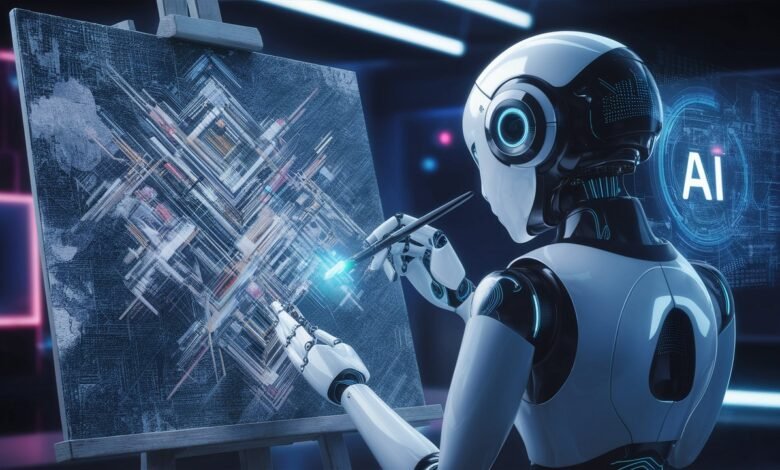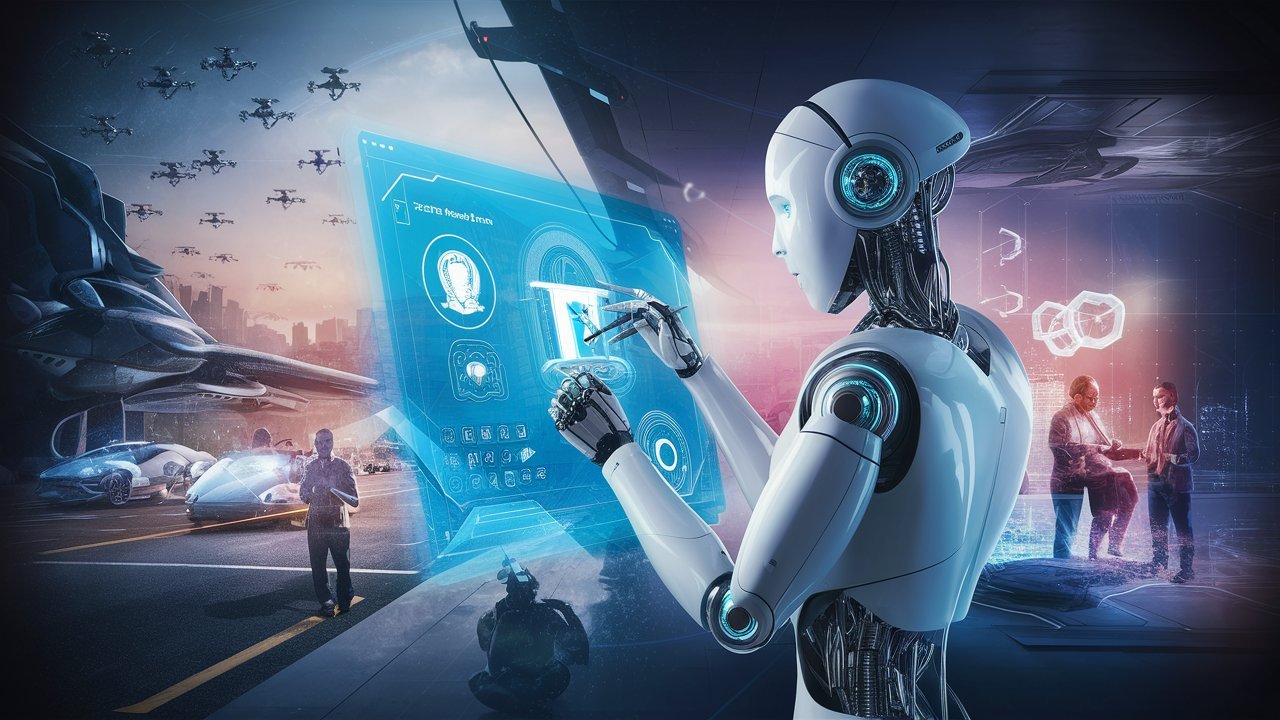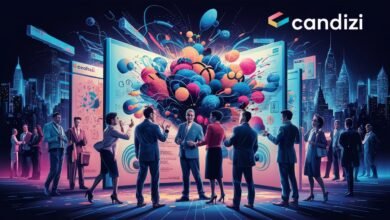The Transformative Power of Artificial Intelligence: Shaping Our World

Introduction
In the 21st century, artificial intelligence (AI) has evolved from a niche scientific concept into a cornerstone of global innovation, revolutionizing industries, economies, and daily human experiences. As algorithms grow more sophisticated and data becomes the new currency, AI’s influence permeates everything from healthcare diagnostics to climate modeling, raising profound questions about ethics, employment, and human identity. This article explores AI’s multifaceted impact, dissecting its opportunities and challenges while demystifying its complexities. By examining key domains where AI is making waves—automation, ethics, creativity, and societal transformation—we aim to foster informed discourse about harnessing this technology responsibly. Whether you’re a technophile or skeptic, understanding AI’s trajectory is crucial for navigating our collective future.
1. Understanding Artificial Intelligence: Beyond the Hype
Artificial intelligence encompasses systems designed to perform tasks typically requiring human cognition, such as learning, problem-solving, and pattern recognition. Unlike static software, AI leverages machine learning (ML) and deep learning (DL) to adapt through exposure to data, refining its accuracy without explicit reprogramming. For instance, neural networks—inspired by the human brain—process vast datasets to identify trends invisible to humans, enabling breakthroughs like predicting disease outbreaks or optimizing energy grids. Yet, AI is not monolithic; it ranges from narrow AI (specialized in singular tasks, like chess-playing algorithms) to theoretical artificial general intelligence (AGI), which remains aspirational. Distinguishing these tiers is vital, as current real-world applications rely on narrow AI, while AGI prompts ethical debates about consciousness and control. Understanding this spectrum dispels misconceptions, grounding discussions in tangible realities rather than science fiction.
2. AI in Daily Life: The Invisible Revolution
From voice-activated assistants to personalized Netflix recommendations, AI integrates seamlessly into routines, often unnoticed. Smartphones use facial recognition for security, while navigation apps like Google Maps employ AI to analyze traffic patterns in real-time, rerouting users to avoid congestion. E-commerce platforms deploy recommendation engines that cross-reference user behavior with global data to suggest products, driving 35% of Amazon’s revenue. Beyond convenience, AI enhances accessibility: tools like Microsoft’s Seeing AI narrate visual scenes for the visually impaired, and language translation apps dissolve communication barriers. However, this ubiquity demands scrutiny. Algorithms curate social media feeds, influencing opinions through echo chambers, while surveillance systems spark privacy concerns. Acknowledging AI’s dual role—as both facilitator and disruptor—empowers users to demand transparency and ethical design in everyday technologies.
3. Automation and Employment: Disruption or Evolution?
Automation fueled by AI promises efficiency but ignites fears of widespread job displacement. Manufacturing robots assemble cars with precision, and AI chatbots handle customer service queries, reducing human labor in repetitive tasks. Studies suggest automation could displace 85 million jobs by 2025 but generate 97 million new roles in AI ethics, data science, and human-machine collaboration. The transition hinges on reskilling; for example, radiologists now learn to interpret AI-assisted diagnostics rather than being replaced by them. Historical parallels exist: the Industrial Revolution eradicated agrarian jobs but birthed urban industries. Governments and corporations must prioritize education reforms and lifelong learning to prepare workforces for hybrid roles where humans oversee AI tools. Proactive policy—like universal basic income trials—may cushion socioeconomic shocks, transforming disruption into an evolution toward more creative, value-driven work.
4. Ethical AI: Navigating Bias and Accountability
As AI systems influence critical decisions—from loan approvals to criminal sentencing—their ethical flaws demand urgent attention. Algorithms trained on biased data perpetuate discrimination; facial recognition software misidentifies people of color more frequently, and hiring tools favor male candidates if trained on historical employment data. Mitigating these risks requires diverse development teams, “explainable AI” frameworks that demystify decision-making, and regulatory oversight like the EU’s AI Act. Transparency is non-negotiable: users deserve to know when an AI, not a human, affects their lives. Philosophers and technologists also grapple with “moral machines,” debating how autonomous vehicles should prioritize passenger safety versus pedestrian lives in accidents. Establishing global standards for accountability—such as third-party audits and bias-bounty programs—is essential to build trust and ensure AI serves humanity equitably.

5. AI and Creativity: Redefining Human Ingenuity
Contrary to fears that AI stifles creativity, it often amplifies it. Generative adversarial networks (GANs) produce original art, music, and literature, collaborating with artists like Refik Anadol, whose data-driven installations transform archives into immersive experiences. AI tools like OpenAI’s DALL-E generate images from text prompts, democratizing design for non-artists, while composers use AIVA to score symphonies. These partnerships expand creative boundaries but provoke questions: Can AI own copyright? Does algorithmically generated art lack “soul”? Rather than replacing artists, AI acts as a catalyst, automating technical tasks (e.g., photo color correction) so creators focus on conceptual innovation. The synergy challenges us to redefine artistry, emphasizing human curation and emotional resonance as irreplaceable elements in the creative process.
6. Societal Transformation: AI in Governance and Global Challenges
AI’s potential to address existential threats positions it as a tool for planetary stewardship. Climate scientists use ML to model ice-melt scenarios and optimize renewable energy distribution, while precision agriculture reduces water waste by predicting crop needs. In governance, AI streamlines public services; Estonia’s digital infrastructure processes taxes in minutes, and predictive policing tools (used judiciously) allocate resources to high-risk areas. However, equitable access remains a hurdle—80% of AI patents originate in just six countries, widening the digital divide. Global cooperation, like the UN’s AI for Good initiative, fosters inclusive innovation, ensuring developing nations leverage AI for healthcare (e.g., diagnosing malaria via smartphone) and disaster response. Balancing efficiency with equity requires multilateral frameworks that prioritize human rights over technological dominance.
Conclusion
Artificial intelligence is not a distant future—it is the present, reshaping civilization with unprecedented speed and scale. Its duality as both a beacon of progress and a source of disruption necessitates vigilant stewardship: investing in education to empower workforces, enforcing ethical guardrails to prevent bias, and fostering global collaboration to democratize benefits. While challenges loom—from job displacement to existential risks—human agency remains pivotal. By centering empathy, transparency, and inclusivity in AI development, we can steer this transformation toward a future where technology amplifies our humanity rather than diminishes it. The journey ahead demands curiosity, adaptability, and collective courage.
Frequently Asked Questions (FAQs)
Q1: Will AI replace human jobs entirely?
No. While AI automates repetitive tasks (e.g., data entry or assembly lines), it creates demand for roles in AI oversight, ethics, and creative problem-solving. The World Economic Forum forecasts a net gain of 12 million jobs by 2025 through AI-driven industries.
Q2: How can we prevent AI bias?
Strategies include diversifying training datasets, involving multidisciplinary teams in development, implementing algorithmic audits, and adopting regulations like the EU’s requirement for “high-risk” AI systems to undergo rigorous assessments.
Q3: Can AI achieve human-like consciousness?
Current AI operates as pattern-recognition tools with no self-awareness. Artificial general intelligence (AGI)—hypothetical systems with human-like reasoning—remains speculative and faces philosophical and technical hurdles.
Q4: Is AI dangerous?
Risks exist (e.g., autonomous weapons or deepfake misinformation), but they stem from human application, not inherent AI “malice.” International guidelines, like UNESCO’s AI ethics framework, advocate for human oversight and harm-prevention protocols.
Q5: How can individuals learn AI skills?
Free resources abound: Google’s Machine Learning Crash Course, Kaggle competitions, and university MOOCs (e.g., Coursera’s AI Specialization). Start with Python programming and statistics, then advance to ML libraries like TensorFlow.
Q6: Does AI threaten creativity?
AI augments creativity by handling technical execution (e.g., generating design drafts), freeing humans for conceptual innovation. Tools like Runway ML assist filmmakers, but storytelling and emotional depth remain uniquely human domains.


